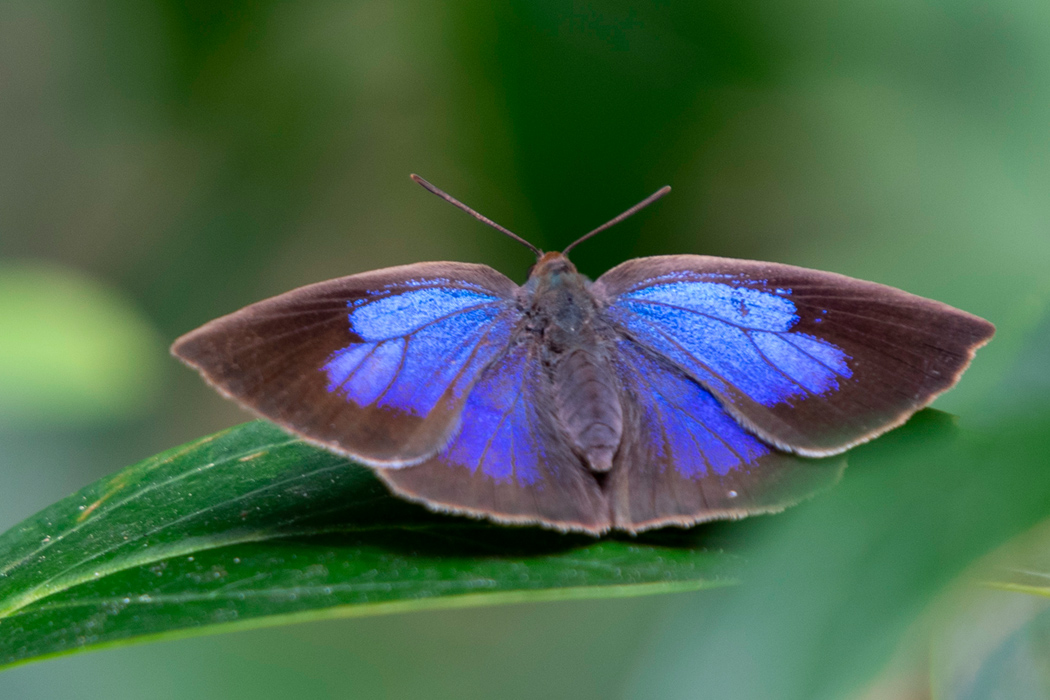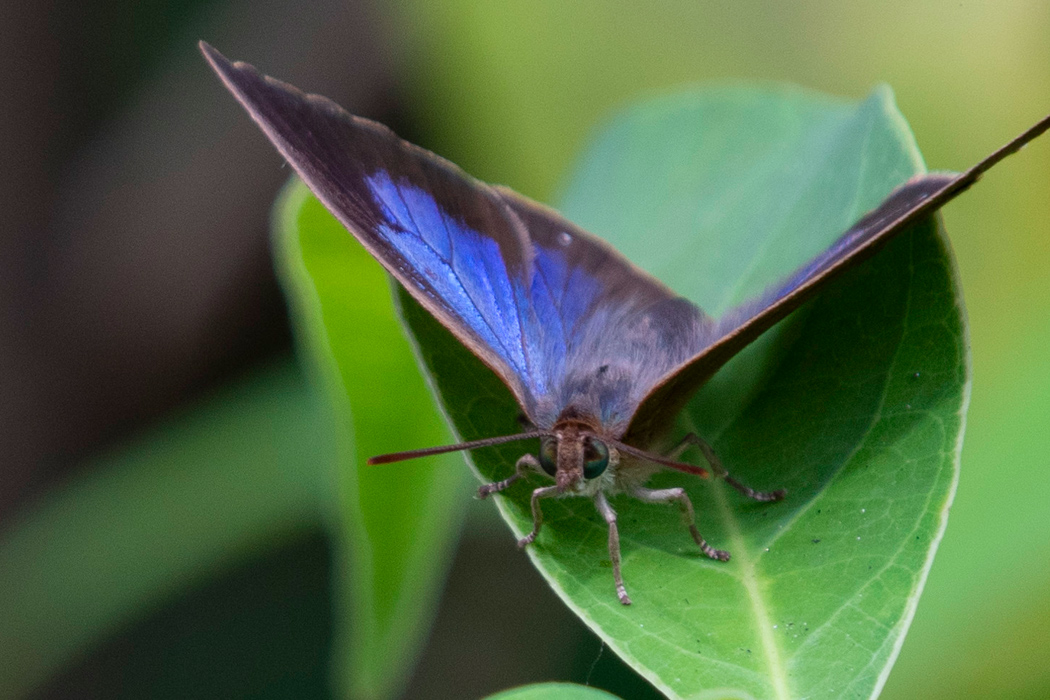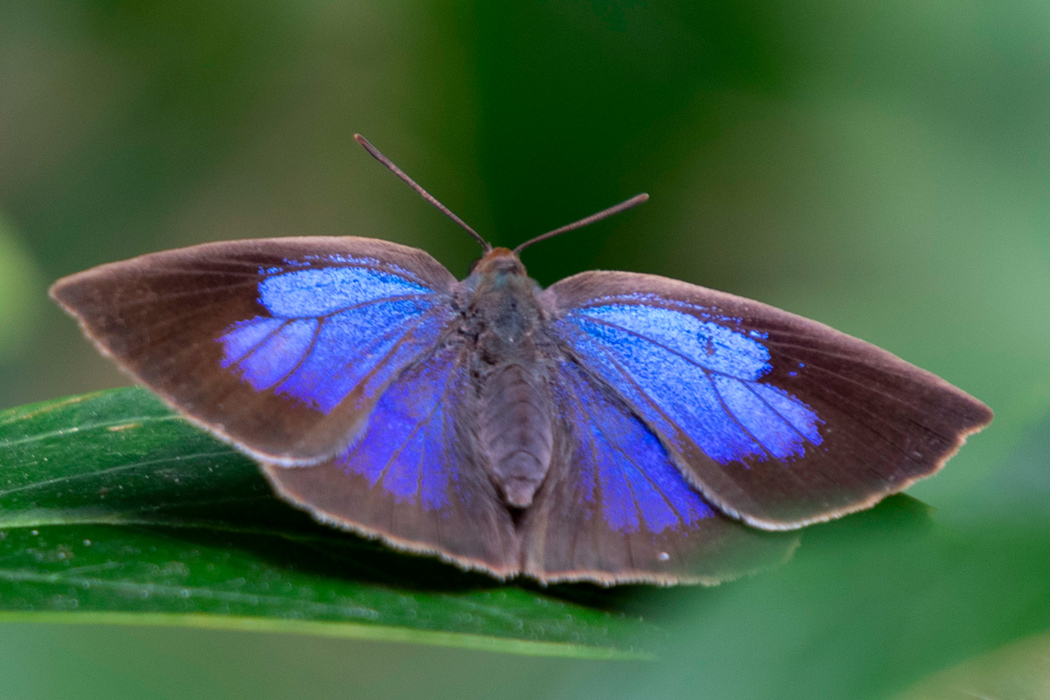
---
The blue-purple gradation is beautiful.
| Scientific name | Narathura japonica |
| English name | --- |
| Japanese name | 紫小灰蝶 |
| Classification | Insecta |
| Classification details | Lepidoptera Lycaenidae |
| Full length | 30-40mm |
| Distribution | south of Miyagi Prefecture |
Characteristics
A lycaenid butterfly with beautiful bluish-purple wings. The inside of the front is glossy bluish purple, and the purple becomes darker from the head to the ventral direction. The edges are dark brown, almost black. The underside of the wings is light brown with a slightly darker brown crest like a stain. The body is gray.
It perches on leaves and branches and flies around trees. I will never fly that far.
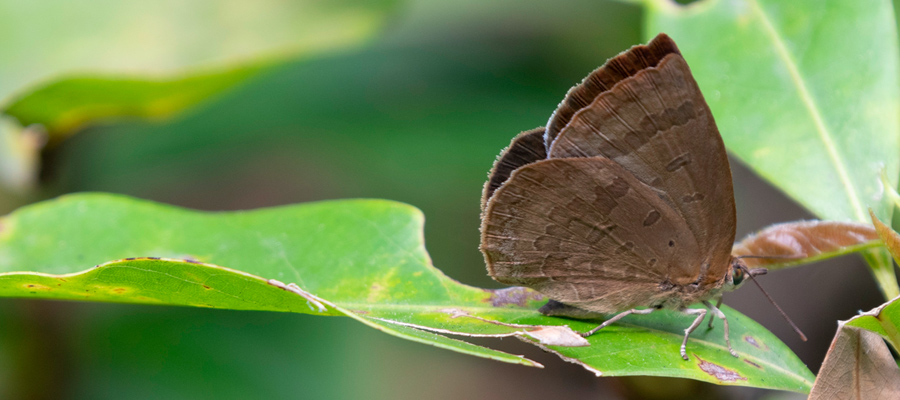
Ecology
It appears from spring to autumn and can be seen in forests and parks. Sucking nectar from flowers is rare, and they often drink water. The larvae of A. purpurea feed on the leaves of evergreen fagaceous trees such as sudajii and glauca. As it grows, it uses leaves to build a nest. Hatches on the ground in leaf litter.
Coexistence with Ami-Me-Ants
The larvae secrete nectar to lure the reticulum ants, and by suppressing the action of dopamine in the ant brain, the larva adjusts its behavior to protect itself. This has been thought to be a "mutual coexistence" that benefits each organism, but in July 2015, a joint research group of Kobe University Graduate School of Science Research Assistant Professor Masaru Hojo and the University of the Ryukyus and Harvard University announced , suggest that the larvae of A. purpurea may intentionally control the ant.
(References)
Lycaenid Caterpillar Secretions Manipulate Attendant Ant Behavior
Habitat
At the Tama Forest Science Garden in Hachioji City, I found a red foxglove perched on a leaf. It flew around the shrub and rested quietly when it perched on a leaf. It did not appear to be sucking nectar from flowers. You will be amazed at the difference between when the wings are open and when they are closed.
Pictures
Introducing a picture of ---.

Picture book

Japanese Rat Snake
Body length is more than 2m.......ead more.
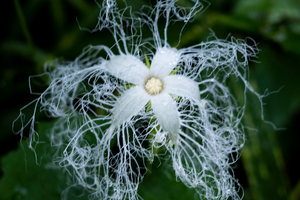
Japanese snake gourd
Lace-like flowers bloom at night.......ead more.

Silver-lined Skipper
A silver streak runs along the underside of the wing.......ead more.

---
Camouflages with seaweed on its head.......ead more.
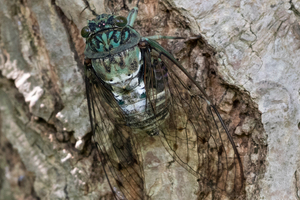
Hyalessa maculaticollis
As its Japanese name suggests, it makes the sound "meenminmin".......ead more.
